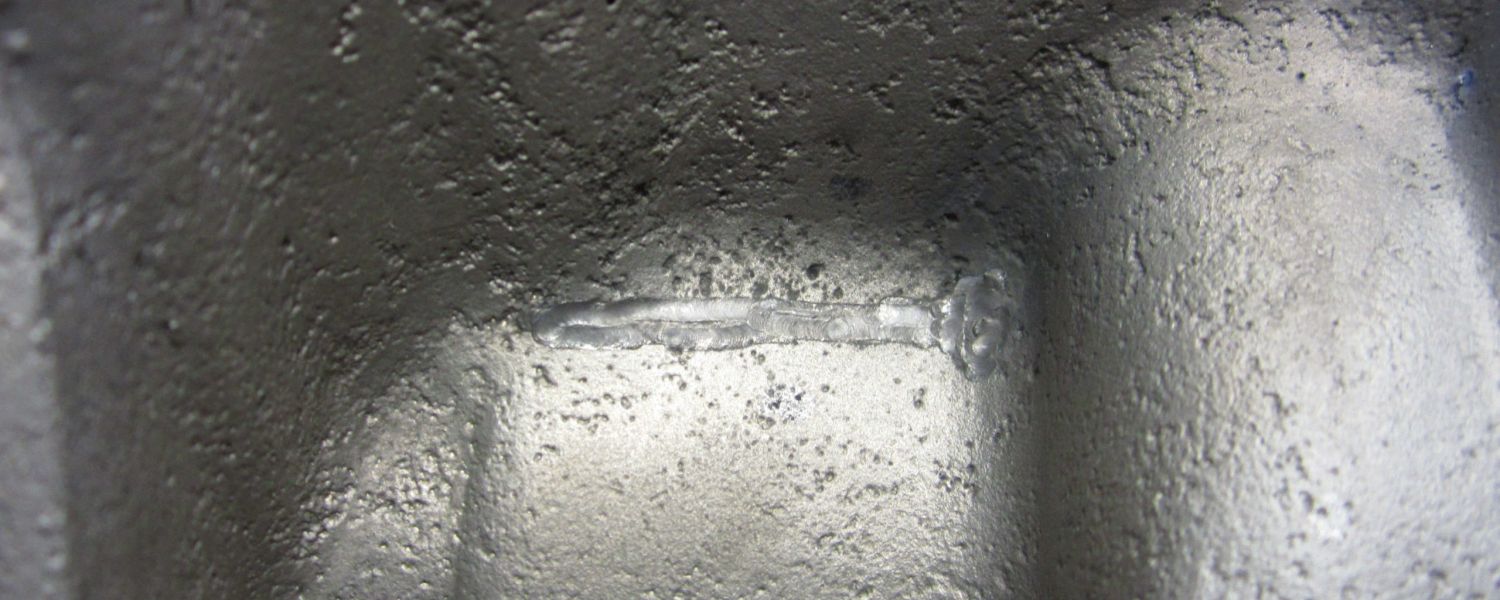Magnesium welding
In recent years, the number of inquiries for magnesium welding has continued to rise. This is because the use of magnesium is receiving more and more attention, especially as a construction material in the course of lightweight construction and energy saving in moving parts. Welding, which we used to perform almost exclusively for prototype construction, is increasingly being used in series production.
With our many years of experience in this field, we are correspondingly well positioned: We weld a wide variety of magnesium alloys such as AZ31, AZ61, AZ91 with high strength or die-cast alloys such as AM50, AM60 or AS21.
As with titanium welding, we work here exclusively with a pure laser. Once all the conditions are in place, we can weld magnesium alloys safely and reliably.

View through a microscope
This weld is 1.3 mm wide and 12 mm long. Welding depth: 5 mm.
Aging
Pores in the surface are a clear sign of the aging of the material. Parameters have to be adjusted very precisely here to achieve a good welding result.
Rework
With us, you get everything from a single source: we are happy to offer finishing work such as turning, milling or grinding on request.
We weld magnesium alloys exclusively with a pure laser.
Magnesium as a material
Magnesium is the lightest construction metal. It is used primarily in aircraft construction and in the automotive industry. Its low density makes it excellent for casting, hardening and machining.
Negative aspects are its susceptibility to corrosion and flammability. Magnesium is difficult to form cold and weldability is considered problematic. Dangerous reactions are to be expected at higher temperatures, especially in the melt.
Therefore, special precautions must be taken during processing.
Difficulty in welding
The fact that magnesium alloys have a low flash point and are easily ignited makes welding a very sensitive issue. In addition, magnesium oxides or deposits can heat up in air to the point of spontaneous ignition. Reasonable bonding or formation of the lattice structure is extremely difficult.
The melt is extremely susceptible to cracking.
Magnesium welding has the narrowest tolerances of all welding processes. The process window in which the process works is extremely small. A minimal discrepancy and the component is no longer usable.
Industries for which we weld magnesium:
Automotive
For example:
- Repair of engine parts and transmission covers.
- Valve covers of high-priced vehicles and racing cars.
- Vintage car repair.
Electric mobility
For example:
- Prototype construction.
- Frame/chassis parts.
Aerospace
For example:
- Prototype construction.
- Sample containers for satellites in small series.